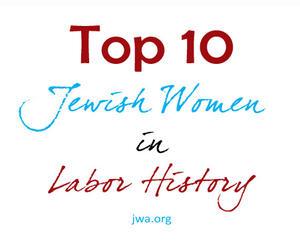10 Things You Should Know About Fannia Cohn
-
Fannia Cohn, born in 1885, grew up in a well-to-do family in what was the western part of the Russian empire: Kletzk, now part of Belarus. She was educated at home, and by the time she was 15, she was involved in secret revolutionary activities.
-
Just before turning 20, she and her brother immigrated to the U.S. aided by wealthy relatives who were already here. Fannia’s first job in the U.S. was with the American Jewish Women’s Committee helping other Jewish women arriving at Ellis Island.
-
By 1906, she was making sleeves in a New York City garment factory. She joined the International Ladies Garment Workers Union (ILGWU), and 1909, organized wrapper and kimono makers into an ILGWU local.
-
In 1913, she helped lead a strike against manufacturers of white goods (i.e. household linens) and attended her first ILGWU national convention as a delegate from her local.
-
The next year, she moved to Chicago, where she attended a school for labor organizers, and again led a strike—this one against a shop making dresses for the giant Sears, Roebuck Company.
-
She returned to New York City in 1916 and was elected the first female vice president of the ILGWU, a position that gave her real clout in the union. She served in that office for ten years.
-
Cohn’s deep commitment to worker education led her to found educational programs in New York City, Boston, Chicago, Cleveland, and Philadelphia. She also started a school for workers’ children. In the 1920s, she traveled to Europe, meeting with colleagues there who shared her concern with education.
-
The ILGWU leaders did not share her broad vision of worker education, and her relations with them were often rocky. Her commitment to a broad definition of education, her willingness to work with those who supported socialist and communist ideals, and her concern for the “rank-and-file” made her unpopular with the union’s male-dominated leadership. At one point, she even had to raise funds on her own to continue projects the union refused to support.
-
She was forced to retire in 1961 and died three months later at the age of 76. At the time, Rose Pesotta, a colleague and another vice president of the ILGWU, observed sadly: “Fannia Cohn’s service to our organization is only recognized by those on the outside who can dispassionately evaluate such unselfish efforts on the part of one person for the cause of worker’s education.... She remains a tragic figure amidst her own fellow workers … Were she a man, it would have been entirely different.”
-
Looking back from the 21st century, a historian put it this way: “Male opposition undermined her efforts and diminished her long-term significance. Her life offers evidence of the possibilities and limitations of women’s activism in the American labor movement.”







